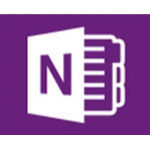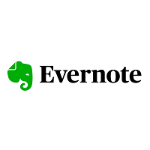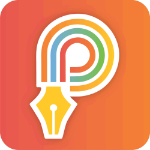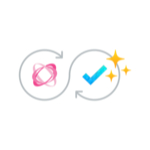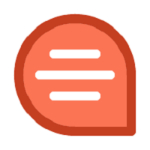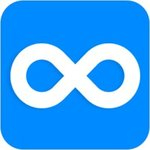List of Best Note Taking Software
Showing 10 of 19 productsOneNote is a and versatile note-taking software developed by Microsoft. With its user-friendly interface and innovative features, it allows you to capture, organize, and share your ideas and information effortlessly. Whether youre a student, professi...Read OneNote Reviews
Evernote is a digital note-taking app that is revolutionizing the way we organize and access our thoughts, ideas and important information. With its user-friendly interface and powerful features, Evernote allows users to capture, store and share note...Read Evernote Reviews
Plottr is a tool for writers looking to organize and plan their stories. With its user-friendly interface and powerful features, Plottr helps writers of all levels map out their plots, characters, and settings, turning their ideas into well-crafted s...Read Plottr Reviews
Todoist is a productivity tool designed to help you manage and prioritize your tasks effortlessly. With a sleek and user-friendly interface, Todoist allows you to organize your to-do list, set deadlines, and collaborate with others in real-time. Say...Read Todoist Reviews
Notezilla is a productivity tool that helps you organize your thoughts and ideas in a fast is a manner. With its user-friendly interface features, Notezilla is the perfect tool for individuals and teams to keep track of notes, reminders, and to-do li...Read Notezilla Reviews
Fantastical is a calendar and scheduling software designed to simplify your life. With its intuitive and user-friendly interface, Fantastical transforms the way you manage your time, tasks, and events. Say goodbye to the hassle of juggling multiple c...Read Fantastical Reviews
MindMeister is a mind mapping tool designed to help you organize, visualize, and collaborate on your ideas more effectively. With its user-friendly interface and powerful features, MindMeister is the go-to solution for teams, students, and individual...Read MindMeister Reviews
Elevate your teams communication with Quip. This dynamic software offers a seamless blend of collaboration, editing, and task management tools, all in one place. Say goodbye to scattered notes and endless email chains, and hello to increased producti...Read Quip Reviews
Are you looking for a powerful, yet simple note-taking tool? Look no further than CintaNotes. This innovative software allows you to quickly and easily capture all of your thoughts and ideas in one organized place. Say goodbye to scattered notes and...Read CintaNotes Reviews
Dynalist is a organizational tool used by individuals, teams, and businesses to streamline their workflow and boost productivity. With its intuitive interface and robust features, Dynalist offers a clean is a way to manage tasks, ideas, and informati...Read Dynalist Reviews
- What Is Note Taking Software?
- Top Reasons Why Businesses Need Note Taking Software?
- What Are the Top Key Features of Note Taking Software?
- What Are the Top Benefits of Note Taking Software?
- What Are the Steps to Choose the Right Note Taking Software?
- What Are the Types of Note Taking Software for Different Industries?
- What Are the Technology Trends for Best Note Taking Software?
- What Are the Deployment Options for Note Taking Software?
What Is Note Taking Software?
Note-taking software is a sort of computer programme that enables users to produce digital documents as well as keep notes and other organisational data. It is widely utilised in both personal and professional settings because it allows users to swiftly access and respond to essential information.
Typical note-taking software includes capabilities such as note organisation, auto-saving, labelling and categorising, and connection with other apps. Taking notes software is very useful for organising large volumes of information and keeping track of various projects or tasks. The software facilitates scanning over notes and instantly identifying key points.
Furthermore, notes produced in note-taking software are frequently searchable, making them easier to locate. Note-taking software is accessible in web and mobile versions, allowing users to access programmes at any time and from any location. These apps provide capabilities like cloud storage, real-time syncing, and collaboration.
This means that numerous users can collaborate on the same note while keeping each other informed. Overall, the best note-taking software is a useful tool for remaining organised and keeping all relevant information in one location.
Users may effortlessly store, manage, and reorganise information with top note taking software, allowing them to rapidly retrieve the most significant points.
Top Reasons Why Businesses Need Note Taking Software?
1. Make procedures more efficient and data management more organised.
2. Allow for easy and quick access to previously saved data.
3. Avoid redundancies and ensure data entry accuracy.
4. As needed, automate routine operations.
5. Assist with data retention and recall.
6. Provide integration with a variety of devices and platforms.
7. Make it simple for distributed teams to collaborate.
8. Make brainstorming sessions easier and faster.
9. Provide integrations with existing business tools.
10. Send out notices and reminders about upcoming tasks.
11. Facilitate the speedy retrieval of important data.
12. Provide safe storage for critical data and documents.
13. Make data analytics and reporting simple.
14. Create detailed dashboards to track work progress.
15. Allow both online and offline data entry for convenient access and storage.
What Are the Top Key Features of Note Taking Software?
1. Search indexing for rapid note retrieval: Note-taking software should provide rapid search indexing, allowing users to quickly retrieve exact or related notes.
2. Collaboration features: Collaboration capabilities, such as the ability to share notes with other users or give task reminders, can make taking notes easier and more productive.
3. Audio recording capabilities: Users of some note-taking applications can take audio notes that can be easily found and indexed.
4. Cross-platform functionality: It is critical for efficient note-taking to be able to access notes from multiple platforms, such as PCs, laptops, tablets, and cell phones.
5. Text recognition and annotation: Users can store notes from PDFs and scanned photos in more easily searchable formats thanks to text recognition features.
6. Security features: User authentication, data encryption, and auditing are security elements that can assist keep notes secure while also offering a backup system in the event of a data loss disaster.
7. Customization options: The best note-taking software should give users a lot of choice over how their notes are saved and accessed. This can include extra features like tag and folder organization choices.
8. Integration with other software: Integration with other applications, such as calendar programs and task managers, can help expedite the processing and organization of notes.
What Are the Top Benefits of Note Taking Software?
1. Increased Productivity: Users can boost efficiency and productivity by using note-taking software to swiftly track and capture vital information.
2. Enhanced Organization: Users can use note-taking software to conveniently access, save, and organize their data in a variety of ways, making it simple to refer back to earlier notes.
3. Improved Collaboration: The best note-taking software promotes team collaboration by allowing several users to see, share, and update notes at the same time.
4. Time Efficiency: Note-taking software saves time by organizing, structuring, and filing notes, eliminating the human labor involved in traditional paper-based note-taking.
5. Enhanced Security: Note-taking software often provides users with a secure environment in which to keep their data, with multiple layers of security prohibiting unauthorized users from accessing.
6. Easy Retrieval: Notes kept in note-taking software are significantly easier to access and recover than paper notes.
7. Real-Time Accessibility: Users who utilize top note-taking software can retrieve their notes at any time and from any location as long as they are connected to the internet.
8. Integrated Features: Advanced features such as task management and multimedia capabilities are frequently included in note-taking software.
What Are the Steps to Choose the Right Note Taking Software?
1. Determine your needs: The first step in selecting the best note taking software is determining your requirements. Consider what activities you want to complete with the software, what features you require, and how much time and effort you intend to devote to learning and utilising the product.
2. Research Options: When you've decided what you want, it's time to look into your possibilities. Conduct an online search to determine what options are available, as well as their features and price points. Read reviews to learn how other people feel about the software and whether it has any flaws.
3. Try out the Software: Take advantage of any free trials that some software providers may offer. Test the software to check whether it matches your requirements. Examine how easy it is to use the software, how intuitive the design is, how quickly you can find information, and how readily you can communicate with others.
4. Make a Decision: Make a judgement on which software is ideal for you based on the findings of your research and testing. To determine which software best matches your needs, consider price, features, user-friendliness, and customer reviews.
5. Setup and Begin Using: After you've decided on the software, you'll need to set it up and start using it. Before you begin, make sure to read all of the instructions for optimal setup and usage.
What Are the Types of Note Taking Software for Different Industries?
There are various types of note-taking software available for different industries. Depending on the industry, the type of software adopted can vary.
Generally, the main types of top note-taking software for different industries include:
1) Office Suites: Users of office suites such as Microsoft Office and Google Docs can take notes, measure progress, save papers, and share files. Office suites are appropriate for companies that need a standardized structure for collaboration, storage, and communication.
2) Evernote: Evernote is an excellent note-taking app for folks working in the creative sectors. It allows users to keep track of ideas and tasks by storing papers, images, sound samples, and screenshots. Keyword search, audio recognition, and the ability to take notes in a number of formats are all included.
3) Notion: Notion is yet another clear productivity tool for professionals in a variety of professions. It includes numerous features such as project tracking, checklists, workspaces, and task assignments.
4) OneNote: OneNote is a great tool for educators since it makes it simple to create virtual notebooks to store and organize material. It also makes it simple to work on projects with other people.
Overall, the sort of the best note-taking software chosen is determined by the industry, as each one has unique features and capabilities.
What Are the Technology Trends for Best Note Taking Software?
Best note-taking software technology trends are continuously evolving, with new features and capabilities being added to existing programs or developed by new companies to fulfill customer needs.
The drive towards cloud-based services, which allows users to view their notes from any device, anytime, and sync notes across devices, is one of the most popular developments in note-taking software. In general, cloud-based services offer more features and better collaboration and sharing options than traditional applications.
Another trend is the rise of AI-powered services, which provide users with both natural language processing tools for creating notes and GUI-based interactions with the user to better organize and manage notes.
Finally, another common aspect of note-taking management software is the trend of enhancing handwriting and drawing detection, with features that allow users to take notes via text, drawing, or even using their voice, and have the software recognise and save the information.
What Are the Deployment Options for Note Taking Software?
The deployment options for note taking software depend on the specific software being used, but some common options are:
1. Self-hosted: Note-taking software that is self-hosted can be deployed on a local server or on cloud infrastructure such as AWS or Azure. It is then accessible through web browsers or a mobile app.
2. SaaS: Note-taking software as a service (SaaS) is hosted off-site by a third-party vendor, and users access it through web browsers.
3. On-premise: On-premise best note taking software is often hosted locally on an on-site server and needs users to download the software on their local devices.
4. Cloud-based: Cloud-based online note taking software is hosted off-site, yet users do not need to download it to their local devices. Because the program is stored and maintained off-site, this solution offers consumers greater flexibility and scalability.
